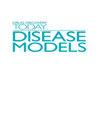乳头瘤病毒相关皮肤病的模型系统
Q3 Pharmacology, Toxicology and Pharmaceutics
引用次数: 3
摘要
乳头瘤病毒(pv)是一种小的、无包膜的双链DNA肿瘤病毒,以包括人类在内的不同脊椎动物的皮肤和粘膜上皮细胞为感染目标。迄今为止,根据papillomavirus Episteme (PaVE)数据库,已知人类乳头瘤病毒(HPV)有230多种类型,分为α、β、γ、mu和nu 5个不同的属[1]。模拟HPV感染的临床前模型系统是研究人类疾病的病毒病因学和病理生理过程的重要工具。在这里,我们描述了不同的动物PV感染模型系统,重点是皮肤致癌模型。本文章由计算机程序翻译,如有差异,请以英文原文为准。
Model systems for papillomavirus-associated skin disease
Papillomaviruses (PVs) are small, non-enveloped, double-stranded DNA tumor viruses, which target epithelial cells of the skin and mucosa of different vertebrate species, including humans, for infection. To date, more than 230 human papillomavirus (HPV) types are known according to the PapillomaVirus Episteme (PaVE) database and classified into 5 different genera, alpha, beta, gamma, mu and nu [1].
Preclinical model systems that mimic HPV infections are essential tools for investigations on viral etiology and pathophysiological processes of human diseases. Herein, we describe different PV infection model systems in animals, focusing on models for skin carcinogenesis.
求助全文
通过发布文献求助,成功后即可免费获取论文全文。
去求助
来源期刊

Drug Discovery Today: Disease Models
Pharmacology, Toxicology and Pharmaceutics-Drug Discovery
自引率
0.00%
发文量
0
期刊介绍:
Drug Discovery Today: Disease Models discusses the non-human experimental models through which inference is drawn regarding the molecular aetiology and pathogenesis of human disease. It provides critical analysis and evaluation of which models can genuinely inform the research community about the direct process of human disease, those which may have value in basic toxicology, and those which are simply designed for effective expression and raw characterisation.
 求助内容:
求助内容: 应助结果提醒方式:
应助结果提醒方式:


